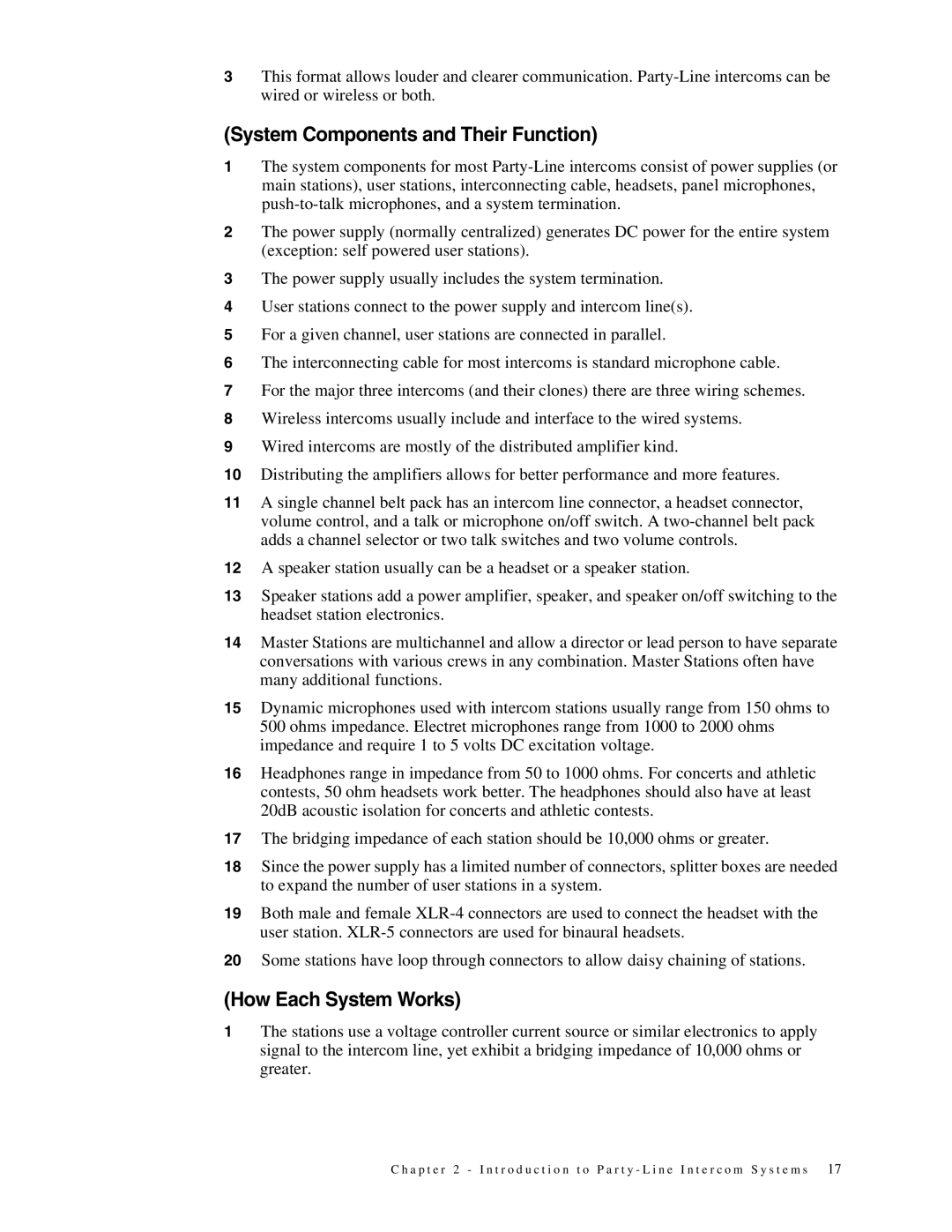3This format allows louder and clearer communication.
(System Components and Their Function)
1The system components for most
2The power supply (normally centralized) generates DC power for the entire system (exception: self powered user stations).
3The power supply usually includes the system termination.
4User stations connect to the power supply and intercom line(s).
5For a given channel, user stations are connected in parallel.
6The interconnecting cable for most intercoms is standard microphone cable.
7For the major three intercoms (and their clones) there are three wiring schemes.
8Wireless intercoms usually include and interface to the wired systems.
9Wired intercoms are mostly of the distributed amplifier kind.
10Distributing the amplifiers allows for better performance and more features.
11A single channel belt pack has an intercom line connector, a headset connector, volume control, and a talk or microphone on/off switch. A
12A speaker station usually can be a headset or a speaker station.
13Speaker stations add a power amplifier, speaker, and speaker on/off switching to the headset station electronics.
14Master Stations are multichannel and allow a director or lead person to have separate conversations with various crews in any combination. Master Stations often have many additional functions.
15Dynamic microphones used with intercom stations usually range from 150 ohms to 500 ohms impedance. Electret microphones range from 1000 to 2000 ohms impedance and require 1 to 5 volts DC excitation voltage.
16Headphones range in impedance from 50 to 1000 ohms. For concerts and athletic contests, 50 ohm headsets work better. The headphones should also have at least 20dB acoustic isolation for concerts and athletic contests.
17The bridging impedance of each station should be 10,000 ohms or greater.
18Since the power supply has a limited number of connectors, splitter boxes are needed to expand the number of user stations in a system.
19Both male and female
20Some stations have loop through connectors to allow daisy chaining of stations.
(How Each System Works)
1The stations use a voltage controller current source or similar electronics to apply signal to the intercom line, yet exhibit a bridging impedance of 10,000 ohms or greater.
C h a p t e r 2 - I n t r o d u c t i o n t o P a r t y - L i n e I n t e r c o m S y s t e m s 17
